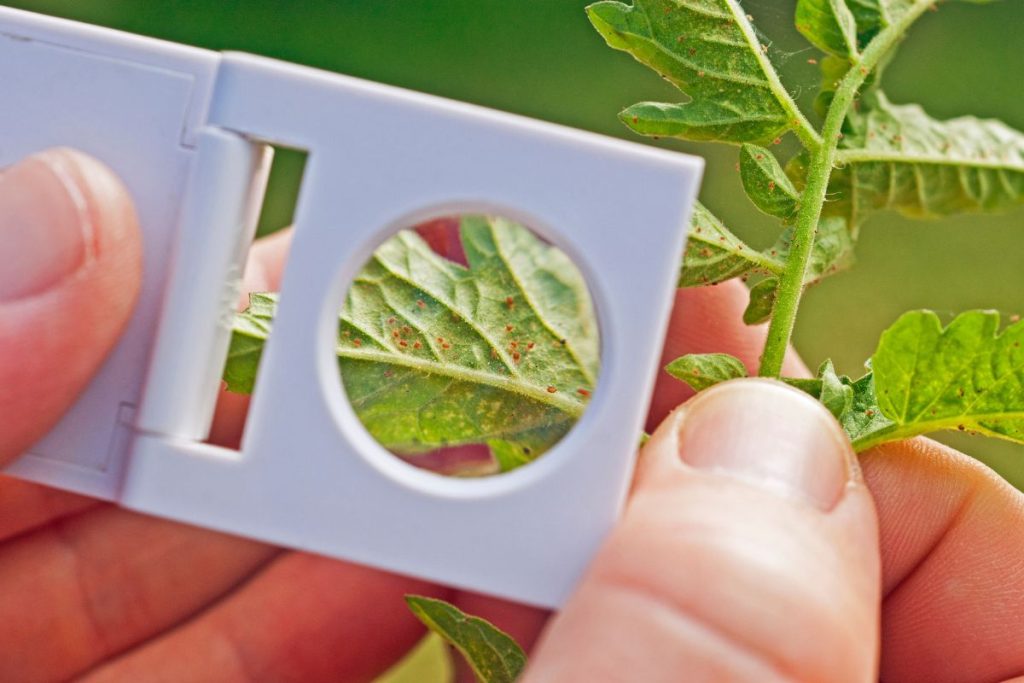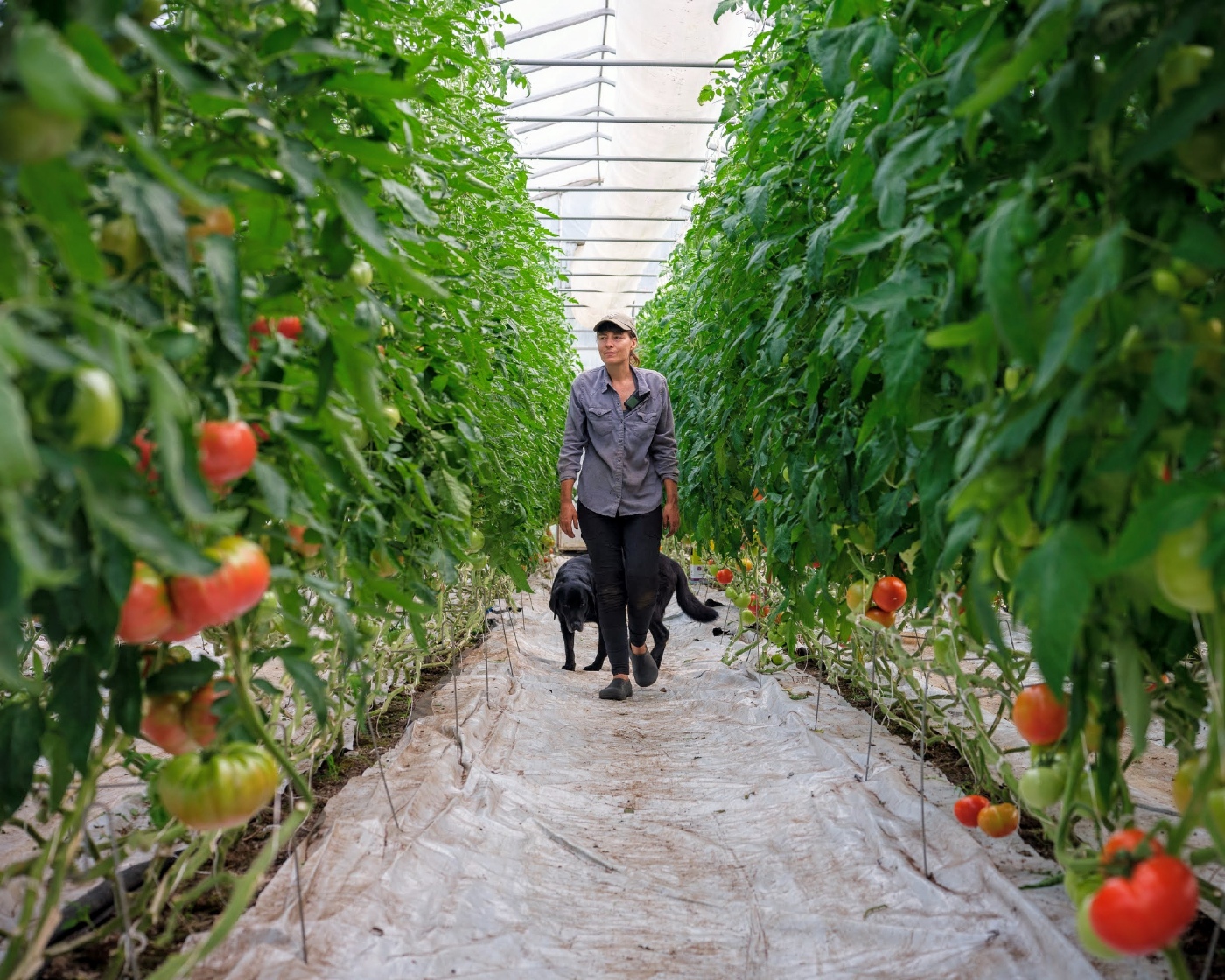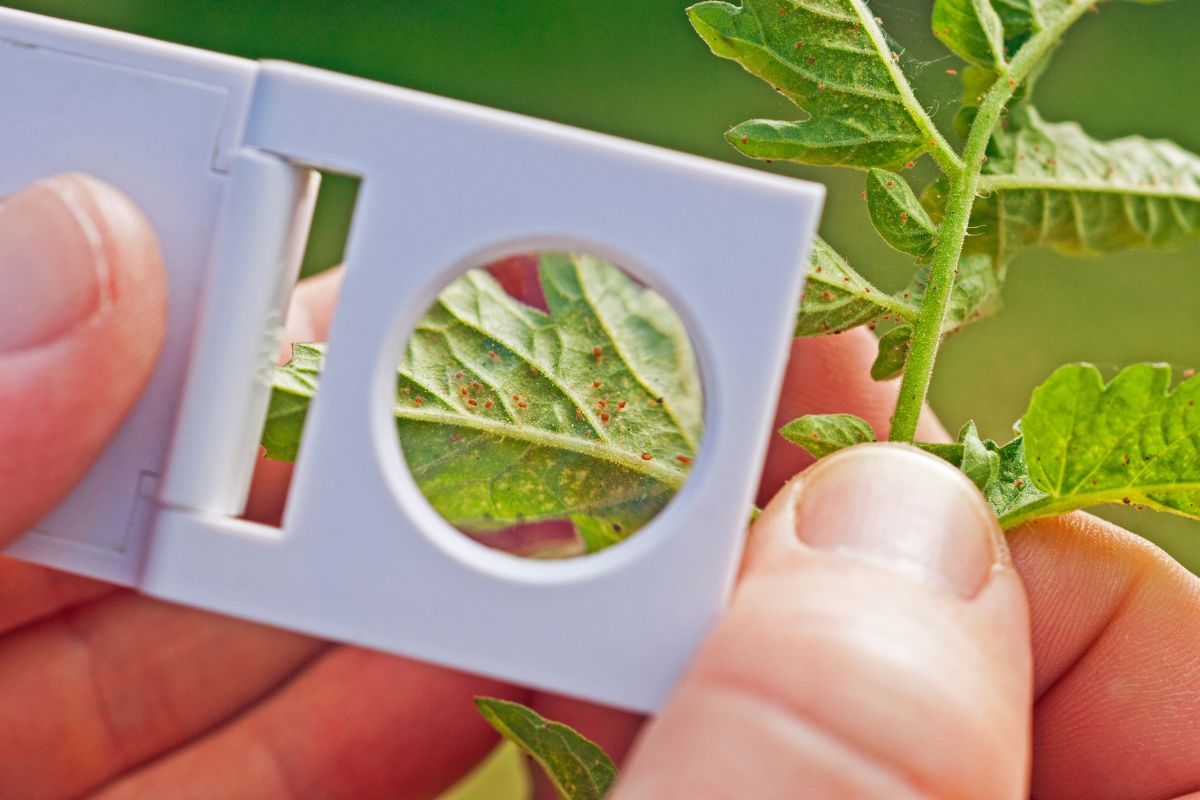Many moons ago, I first encountered spider mites, a pest that, ever since, I’ve been protecting my cucumber crops against.
Funny enough, even after all these years, I still remember that moment like it was yesterday.
I had no idea what was going on at first. It was one of those scorching hot July afternoons, and I was walking through the cucumber tunnel like I always do. Some of the leaves looked kind of off, pale, a little crispy, like they were just drying out from the heat.
I figured, eh, maybe we skipped a watering, or the plants were just tired from the heatwave. I didn’t think too much of it.
Two weeks later, the entire crop was toast. Every single cucumber plant, gone.
These were my first years in greenhouse production, and I was lucky to have access to a solid greenhouse support network. After making an emergency call, one of my go-to mentors came by to take a look. It took him about two minutes to confirm what he already suspected: spider mites.
And sure enough, once he pointed it out, I saw the webs.
How to Spot and Deal with a Spider Mite Problem (Before It’s Too Late!)
Spider mites are tiny, barely visible to the naked eye, but they cause damage fast. The good news? If you know what to look for, you can catch the signs early enough to take action.
How to Spot a Spider Mite Problem
- Leaves lose their color – They may look dull, faded, or slightly yellow.
- Tiny speckles or dots – Also called “stippling,” this is often one of the first signs.
- Dry, brittle leaves – It’s easy to mistake this for heat stress.
- Webbing – Fine, silky threads between stems or under leaves. If you see webbing, the infestation is already advanced.
- Visible mites – If you look closely at the underside of leaves, you might spot tiny red or brown dots moving slowly.
If you’re wondering how do you correct spider mite in a greenhouse, the answer starts with early detection.
If you catch these signs early, you’ve got a fighting chance.
When I see the first signs, I act quickly. I start with a spray of neem oil, which helps disrupt reproduction and slow the mites down. Then, 4 to 5 days later, I follow up with horticultural oil which seems to be more effective for established infestations
At the same time, I order beneficial insects, Phytoseiulus persimilis, a fast-moving predatory mite that feeds exclusively on spider mites. It works best after the pest population has been weakened by sprays.
This approach has worked for me in the past. But to be honest, in the last 10+ years, I’ve avoided the problem almost entirely by focusing on something even more effective.
The Real Solution: Humidity
Spider mites thrive in hot, dry conditions.
So the most effective long-term answer to how do you correct spider mite in a greenhouse is this: change the environment. Make your greenhouse a place they don’t want to be!
Years ago, another grower shared a simple trick with me that stuck:
“Mist your greenhouse multiple times a day, not to water the plants, but to create conditions spider mites can’t stand.”
He was right.
Since then, I’ve made humidity control a core part of my pest prevention strategy. In our cucumber tunnels, we use fogging misters, running them every 30 minutes on hot days to keep the humidity above 50%. That alone makes it much harder for spider mites to spread or settle in.
Honestly, this approach has made all the difference. We’ve avoided major infestations for years now, and it’s mostly thanks to this consistent humidity management.
It’s become my #1 prevention method and something I always recommend to other growers. Simple, effective, and way easier than trying to fight an infestation after the fact.
Set Yourself Up for Success
If you’re getting into greenhouse farming or already facing pests and wondering how to correct spider mite in a greenhouse, remember this: the best strategy is prevention.
For a comprehensive look at proactive pest prevention systems, I highly recommend to read our article Greenhouse Pest Prevention: The Ultimate Guide to Setting Yourself Up for Sanity. It’s a must-read if you want to build resilient, growing systems that stop problems before they start.
And if you’re looking to improve your overall greenhouse management, don’t miss The Ultimate Guide to Greenhouse Farming for Market Gardeners. I provide an in-depth breakdown of the core principles and proven strategies we use consistently, season after season, for successful greenhouse production.
Push your knowledge further
Want to master greenhouse pest management and stay ahead of pest pressure?
If you’re serious about getting into greenhouse production, you should consider joining our online course Mastering Greenhouse Production! This greenhouse farming course brings together all the most important information you need to know to reduce errors, improve efficiency and increase your bottom line. It provides precise written and video instructions to give you the exact methodology, tools and techniques needed to grow crops successfully in a context of heightened efficiency.












